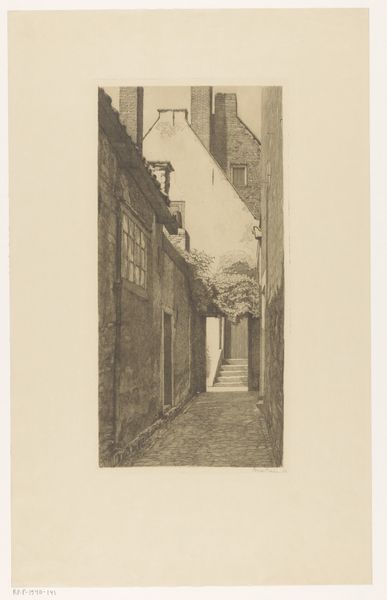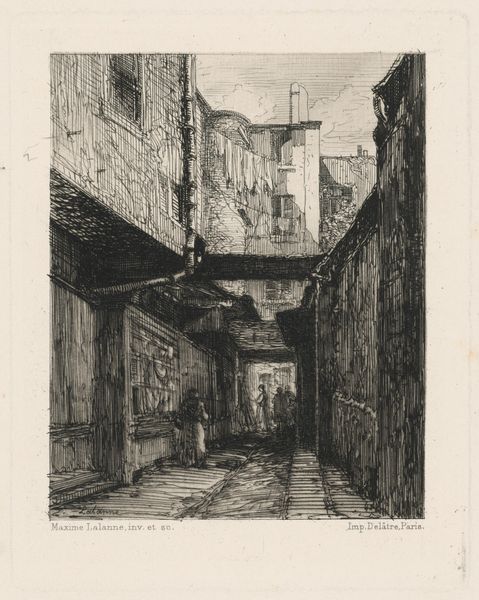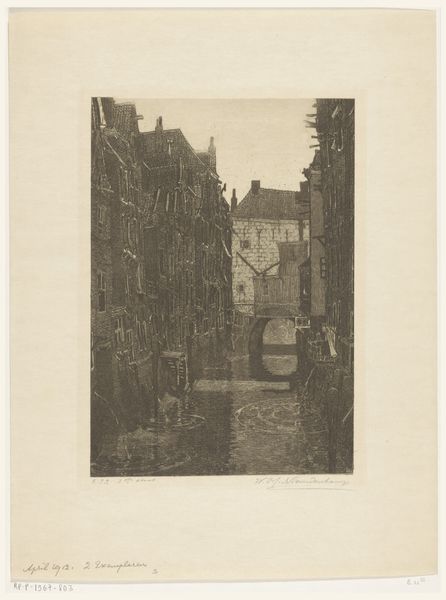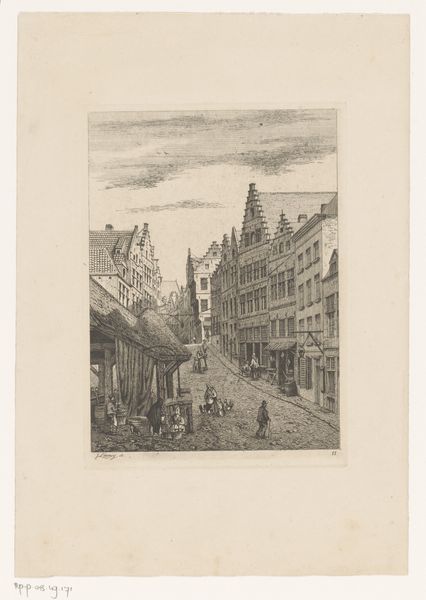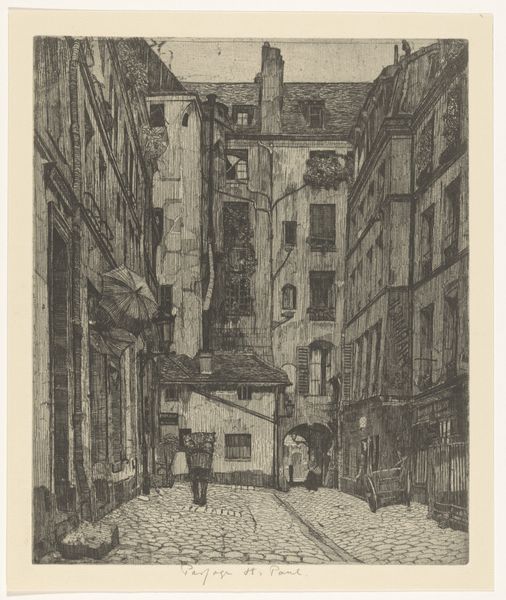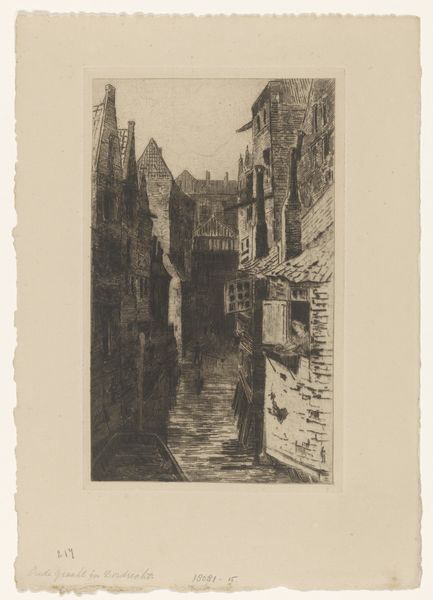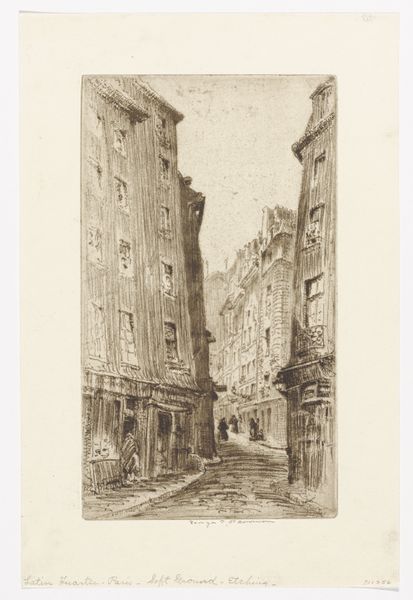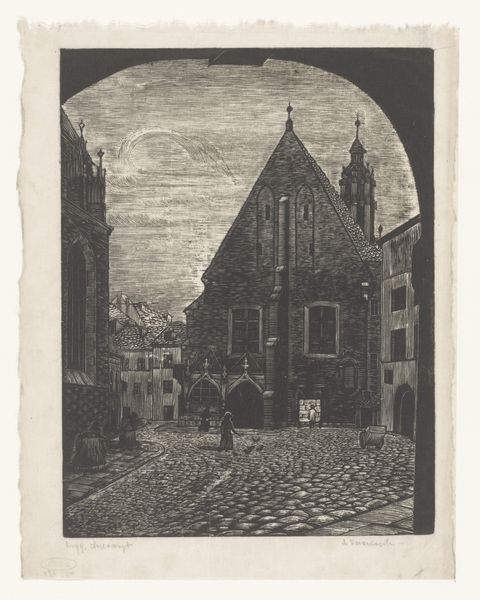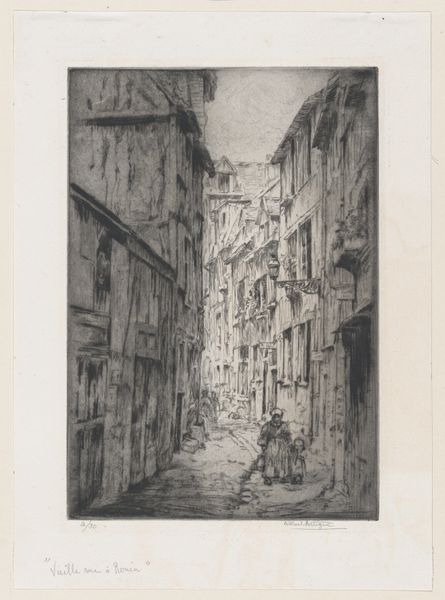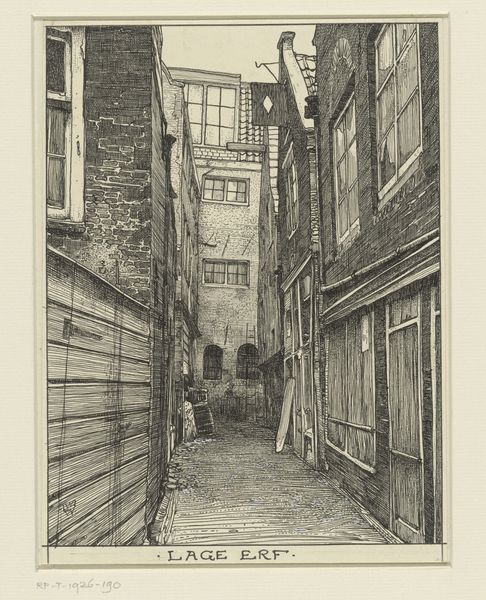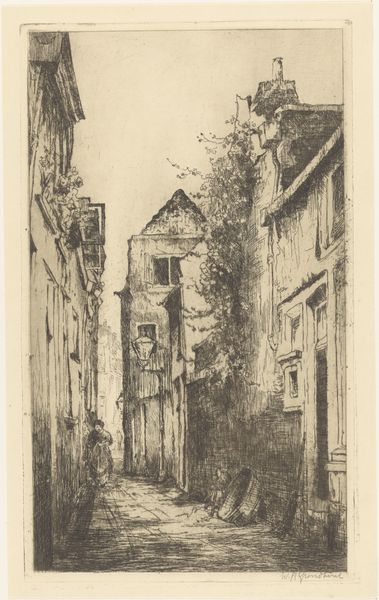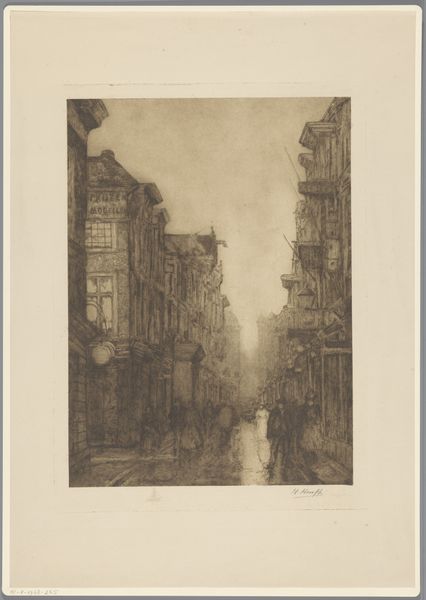
print, etching
# print
#
etching
#
cityscape
#
realism
#
monochrome
Dimensions: height 257 mm, width 159 mm
Copyright: Rijks Museum: Open Domain
Editor: This is Emile Puttaert's "Gezicht op een straat in Brussel," an etching from 1875. The details he achieved using the printmaking process are incredible! What's fascinating is how this scene captures a bustling urban life through what appears to be such an arduous and painstaking process. What stands out to you? Curator: Well, let's consider the labor involved. Etching is a chemical process: the artist manipulates metal plates and acids. Here, Puttaert harnesses a rather unforgiving method to represent, perhaps romanticize, urban existence. Notice the buildings. What material are they constructed from? Editor: They look like stone and timber, maybe brick, depending on the building. Curator: Precisely. This etching isn't just a picture, but a document of material reality. The labor to extract, transport, and construct these buildings, that too is represented here. Also, think about what the printing press, the industrial engine of the 19th century, makes possible: the *reproduction* of this scene, extending its reach and potentially democratizing art, a stark contrast to the laborious methods involved in both depicting and constructing the subject of the scene. Editor: So, the materials and labor, from the city to the print itself, inform our understanding of the piece? Curator: Exactly. We must also look at *who* this imagery is being made *for*. Who would consume this art and how does that dictate the materials selected to make it? Editor: That makes so much sense. It really gives you a different perspective than just seeing it as a pretty cityscape. Curator: I hope it provides more tools for your toolkit to assess these prints!
Comments
No comments
Be the first to comment and join the conversation on the ultimate creative platform.

